









Porcelain panels create an experience that is unlike anything you’ve seen before. They offer a seamless, grout-less surface that will transform your space with breathtaking results. With the wide range of colors and the durability of the material, porcelain works for a variety of applications, including countertops, shower stalls, fireplaces, and walls. Rumford Stone is the ideal source for natural stone, quartz, and porcelain surfaces and is the trusted choice for discerning homeowners and kitchen designers.





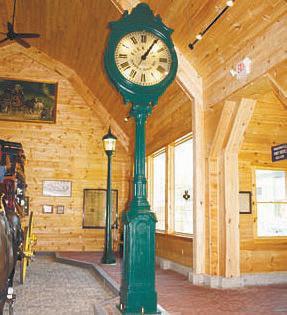

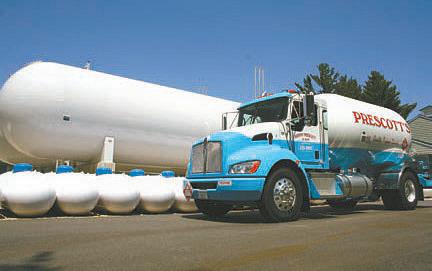


























It’s that time of year to put away our skis, ice skates and crampons and trade them in for hiking boots, sneakers and sandals.
After a long New Hampshire winter, that’s a welcome trade for most of us.
In this issue of Around Concord magazine, you’ll get to discover, or rediscover, all kinds of trails in the Capital Region area along with a few swimming spots and sweet eats afterward.

You’ll learn about all those runners wearing blinking, glowing lights that trot along the road at all hours of morning and night. Take a trip to one of the state’s many abandoned railroad beds that have been turned into hundreds of miles of rail-trails that are perfect for walking and biking, soak up the New Hampshire Heritage Museum Trail, check out all of the wild creatures at the Squam Lakes Natural Science Center, or sign up for one of the various offerings from the Concord’s Parks and Recreation Department.
Concord also contains one of the most unusual examples of a repurposed railroad: Scenic Railriders. The business lets people pedal their way along the tracks in a four-wheel “rail bike,” think humanpowered rail car, between 2nd Street in Concord and Commercial Street in Boscawen.
If that’s not enough fun, learn more about the New Hampshire Ice Cream Trail, developed by Granite State Dairy Promotion and your local NH dairy farmers, which features 42 ice cream shops all across the state.
But if these spots aren’t enough, there’s always the mother-of-alltrails in the state, which is actually a collection of trails, known as the White Mountain Four Thousand Footers
Formed in 1957 to introduce hikers to some of the lesser-known sections of the White Mountains like Owl’s Head and West Bond, the list of 48 peaks ranges from 6,288-foot Mount Washington to 4,003foot Mount Tecumseh. Those who finish all 48 can apply to officially become part of the AMC 4,000 Footer Club and buy a patch to wear as a literal badge of honor.

Don’t delay, get out there and enjoy everything a New Hampshire summer has to offer.
Jonathan Van Fleet EditorEveryone defines wealth differently.
We work in partnership with you to create, implement and manage investment solutions that meet your objectives today and for future generations.















































PUBLISHER
Steve Leone
DIRECTOR SALES & MARKETING



Sean McKenna
EDITOR

Jonathan Van Fleet
ASSISTANT EDITORS
Allie Ginwala
Jeanne Lester
Sarah Pearson
Rachel Shepard

CONTRIBUTORS


David Brooks

Marjorie Burke
Jamie L. Costa
Ray Duckler
Geoff Forester
Sruthi Gopalakrishnan
Eric Rynston-Lobel

Michaela Towfighi
Lissa Warren
ADVERTISING DIRECTOR

Steve Pare
ADVERTISING
Tim Brennan
Joelle Ciras
Joelle Del Signore
Justin Graybill
Deb Spaulding




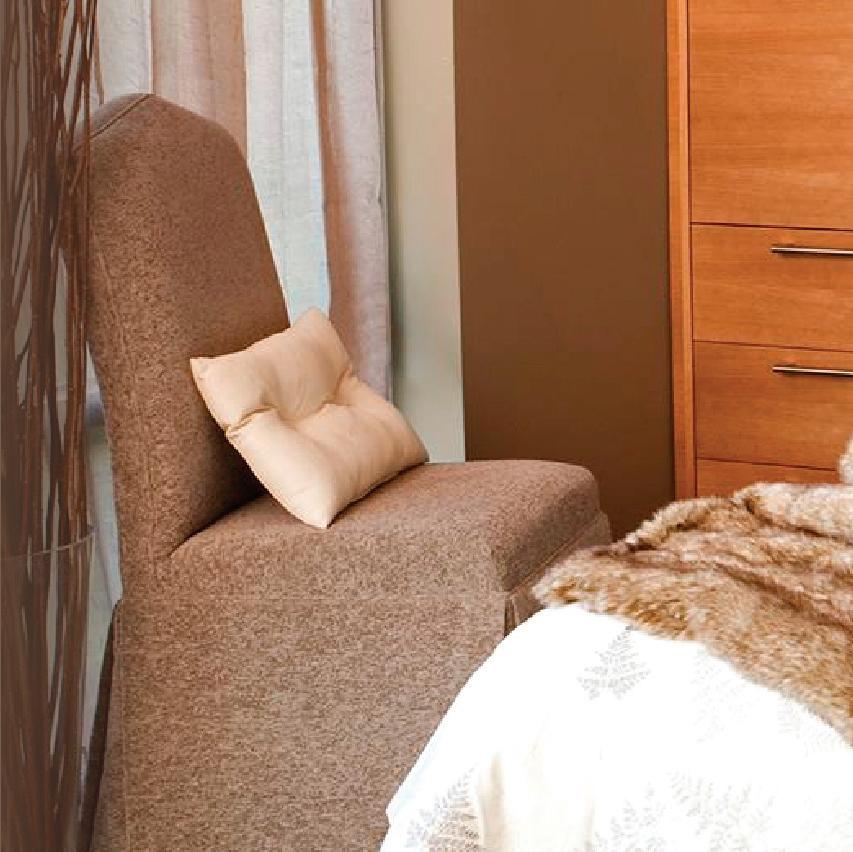





































For Xochiquetzal Berry, life and work are centered around food. A food systems specialist and certified permaculture designer, she’s passionate about helping other food-loving folks develop a resilient, equitable, and vibrant regional food system. She’s also the marketing & communications coordinator for the Northeast Organic Farming Association of New Hampshire (NOFA-NH). Throughout her 15 years of experience, she’s worked as a chef, school garden coordinator, permaculture program head and agricultural educator. She’s even created an urban homestead right in her backyard in Concord where she lives with her husband and daughter and their dog and six chickens. Expanding their “little urban paradise” each year, Berry’s plot is filled with 11 fruit trees, a variety of berries, horseradish, rhubarb, asparagus, herbs, perennials, and annual beds. As the summer season kicks off, Berry shared some of her favorite places to be around Concord and tips for those who might want to start their own urban homestead in the Capital Region.


You can make your own oasis at home and start a sustainable food system. Just start small. I love going to Osborne’s Farm & Garden Center for raised bed mix, organic vegetable starts, and great stuff for chickens. Cole Garden also has a good selection. They have organic herbs I love to get in the late spring and early summer. Another really cool resource is Found Well Farm in Pembroke. It has certified organic vegetable seedlings and plants that are native to New Hampshire that are grown organically, like trees, shrubs, perennials and flowers.

Concord is such a hidden gem when it comes to food. There are so many really cool places to get involved. The Concord Farmer’s Market is so fun. There are so many awesome vendors, lots of organic farmers we work with doing great work in this community, vendors making bread and mustard and wine and all of this locally made stuff folks might not think immediately of. It’s so exciting and cool that you can buy a local wine made with a local grape. It’s great to get a coffee or tea at Revelstoke and just walk around while my daughter plays on the State House lawn. Plus, we always see tons of cute puppies there.





Revival Kitchen & Bar is so delicious and so creative. They really support a lot of the local farms around the Concord area. Same thing with NH Pizza Co. Their pizza is so amazing and I love seeing their posts on Instagram talking about Brookford Farm veggies. That’s the farm that we get our CSA from and there is a pickup location in Concord.

Our favorite trail is the Marjory Swope Park Trail – it’s such a pretty view and is great for younger kids. Our three-year-old can hike it with us. We especially love it in the summer when we can hike and treat ourselves to ice cream at Beech Hill Farm and say hi to the pigs and cows.


As the weather warms and daylight lengthens, Concord Parks and Recreation gears up for its trove of summer offerings. From swimming pools to movie nights to sports camps, residents will have plenty of options to enjoy the summer months.

Around Concord caught up with Parks and Rec director David Gill to discuss the upcoming summer offerings including a new splash pad at White Park.
Responses have been edited and condensed for clarity:
AC: What’s Parks and Rec going to be offering this summer?
David Gill: The Parks and Recreation Department is going to continue to offer our traditional summer camps and sports specialty camps for the youth. Obviously all the parks are open. Most of the parks and neighborhoods have either a basketball court or a playground nearby to play at.
We’re doing our best to open all six pools this summer. We have a

Concord Parks and Recreation director David Gill talks about the city’s new splash pad and the many opportunities available across the city this summerGeoff Forester Amiyah Adair and her friend, Therenna Conteh, swim in the wading pool along with Therenna’s brother, Konson, at Rolfe Park.







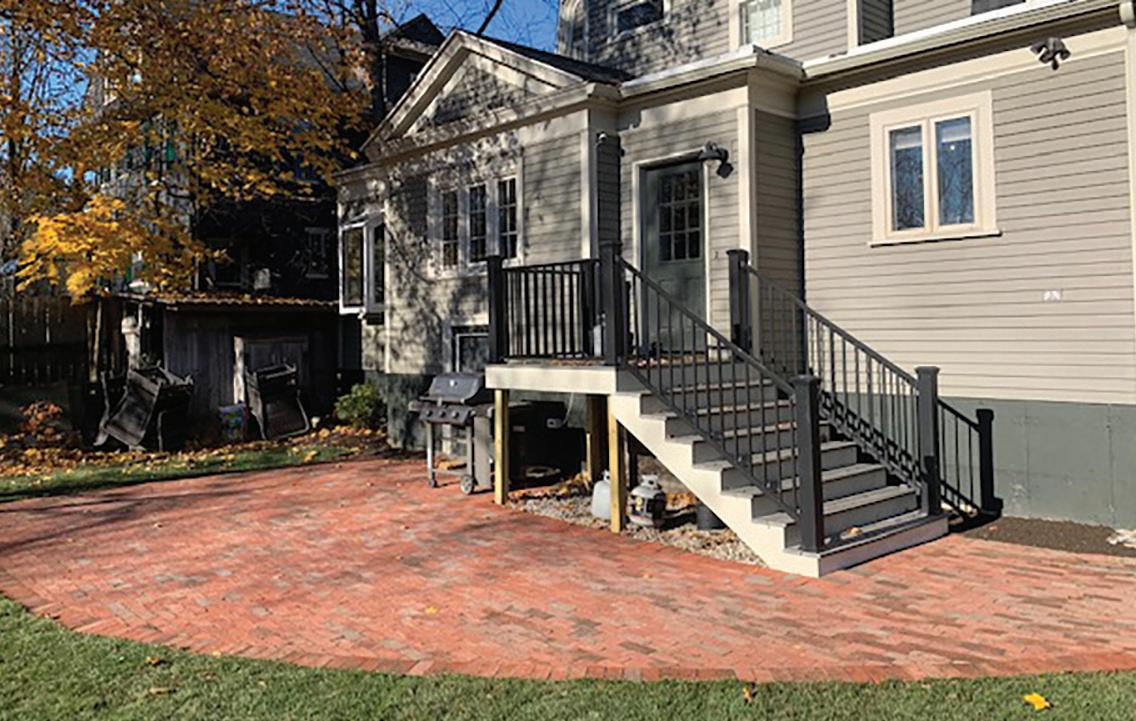




new splash pad opening up at White Park. The challenge with the pools continues to be hiring staff, and then having the staff be able to take the Red Cross lifeguarding certification and pass.
Just about all the athletic fields, baseball, and softball fields are used throughout the summer for tournaments. We have an adult softball league that uses our fields.
This summer, once again, we’re partnering with Red River Theatres, and we’ll have several outdoor movies in the park that are free for the residents. And then we’re also offering – thanks to a sponsorship from Concord Housing and Redevelopment – free swim lessons for Concord and Penacook youth.
AC: Following up on the lifeguards, I feel like every summer every place is struggling to find them. How many do you need?
DG: The ideal number to have on payroll and go through the training is between 35 and 40. Having six community pools and the splash pad, we’re kind of unique in the nation for a community of this size to have that many swimming pools. We’ve had seven swimming pools in seven areas since 1937, 1938, so it’sa wonderful tradition that Concord has. But like everywhere, we’re doing our best to attract and train staff to get all the pools open.
AC: You mentioned the splash pad. I know that’s going to be a point of excitement.
DG: This year, the White Park pool was on the docket to be fully renovated. The pool itself used to be
only 2.5 feet deep, so the decision was to turn it into a splash pad. It’s the same footprint, same location in White Park. We’re using the same bath house and bathrooms, but it’s going to be an all-new splash pad with new pumps, filters, etc.
AC: What else will you be offering that’s new this summer?
DG: Off the top of my head, that’s everything in a nutshell. We do adult tennis lessons. The parks have pickleball. We usually have pickleball clubs. This is the time for all the beginners to play together and all the skilled players to play together. We do that in the community center over the summer.
AC: Pickleball is a big deal. I assume you’ve seen a relatively large increase in participation?
DG: Huge. Pickleball has been around since the ‘60s and kind of arrived in Concord about eight years ago, so now we have four indoor courts at the community center. They’re multi-use, so we can use them for basketball and other activities. Then we have two courts lined in the Green Street Community Center, and in last year’s budget, we added six standalone pickleball courts up at Rolfe Park.
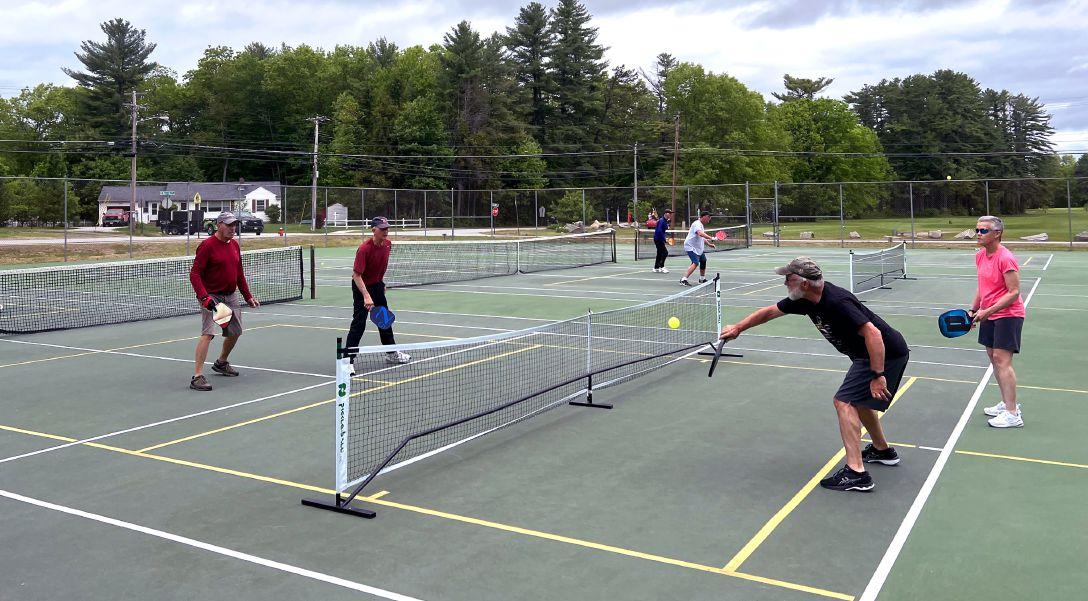
AC: Anything else folks should know about that Parks and Rec will be offering this summer?
DG: We have an active Facebook page. All our information is on our website. We do a summer concert series, and then we also have concerts around the neighborhoods. A lot of good options to keep people active and busy.
It’s a tradition nearly a half-century in the making. For one long weekend each summer, the city shuts its downtown to traffic and invites food vendors, artists, merchants, performers and lots of pedestrians to stroll the sidewalk and see what Concord is all about.


This year marks the 49th Market Days, and it’ll be held Thursday, June 22 through Saturday, June 24. Each days runs from about 10 a.m. to 10 p.m.
You’ll have lots of music to choose from. In fact, the lineup features more than 20 acts over the three days.
Among the headliners is Michael Glabicki, the singer-songwriter behind the 1990s band Rusted Root. These days, his band goes by Uprooted, and it’ll feature much of the same catalogue that became a soundtrack on college campuses and beyond across much of the country.
And there will be plenty of enter-
tainment options on the State House lawn and in Eagle and Bicentennial squares. You can also peruse works from the region’s best artists, sit down and have a cold one in the beer gar-
den or stop in to any of downtown’s restaurants.
For more information and for a full lineup of events, visit marketdaysfestival.com.
In New England, there has long been a deep affection for traditional dance and its corresponding music. Folk dance joins us together, lifting us out of inhibitions, anxieties, and our acculturated need to exert control. It requires our participation as individuals, yet we embrace it as an exercise in group dynamics. The Yankee instinct for community art has been the inspiration behind Dudley Laufman’s lifelong stewardship of country dance, which is the story at the heart of “All Join Hands,” a new book by Thomas Curren.

While in high school, Laufman who grew up in Arlington, Mass., and now lives in Canterbury apprenticed with fiddlers and callers throughout New England. Eventually, he squired the old country dance traditions through to their revival in the 1960s at the Newport Folk Festival, Club 47 (now Club Passim) in Harvard Square, and on Robert J. Lurtsema’s “Morning Pro Musica”
“All Join Hands”

by Thomas S. Curren is available from Gibson, Toadstool and MainStreet Bookends Bookstores, among other places books are sold.

Dudley had developed a deep affection for the old ways while in high school. What he could not have predicted was that rural New England would be inundated by young people spilling up from the cities to find new lives in the countryside. Dudley found himself very suddenly transformed from being a young acolyte among the elders into being a sort of a pied piper of the young.

radio broadcasts.

At the same time he narrates Laufman’s life and contribution, Curren himself a folk musician chronicles the roots of square dance (also known as contradance) in Europe and America, the folk revival of the 1960s and 1970s, and the commensurate back-to-the-land movement that has long sought to provide a sustainable alternative to the perils and pitfalls of consumer civilization. A book that chronicles the living tradition of New England country dance through the life’s work of one uniquely talented and determined man, “All Join Hands” shows us how, over the course of seven decades, one of the key cultural components of a region was revived and renewed.
Curren is a writer, farmer, conservationist, and historian. He has served as a town selectman, a town moderator, and a non-profit consultant, and volunteers for the Folk New England Archive at the University of Massachusetts. As project director with the Pew Charitable Trusts and as director of local conservation organizations, he has helped enable the conservation of nearly 900,000 acres in New England, New York, and Pennsylvania’s Amish country. An authority on New England culture and landscape, his previous books include “I Believe I’ll Go Back Home: Roots and Revival in New England Folk Music” as well as four histories of New Hampshire towns. Part of the group “The Good Old Plough,” he plays and sings traditional music at times with Dudley Laufman and friends. He lives in rural
New Hampshire.

Curren discusses his book, country dancing and his friendship with Laufman:
Most of us associate country dancing with Texas or the South. Are you saying it’s actually a New England thing?

Well, I’m not going to attempt to make the case that chili or Cajun shrimp soup are Yankee fare, but they are younger cousins to our baked beans and seafood chowder! In general, Anglo-European music traditions arrived first off the New England coast and then made their way westward and southward over time. For example, the old ballad song

“Barbara Allen” was popular in England as early as the 1500s and came over here to Salem, Massachusetts in 1636 on a ship called the True Love. Imagine being in a position to say that your ancestors came over on the True Love!
After the Revolution, folk music headed with the settlers toward Appalachia, where the old Yankee jigs were converted into bluegrass hoedowns and the French “quadrilles” became square dances. The “Barbara Allen” song was collected in North Carolina in 1907 and by John Lomax in 1939 at Florida State Prison. When it was discovered by folkies in the 1960s (most likely on a Joan Baez album) the song was assumed to be a Southern piece which it was, by then … but that was only the latest part of a long, long story. It’s a story that begins in New England,

and one that deserves to be told.
What was true of songs was true of dances as well, and by the 20th century there was a lot more traditional dancing to be found in the rural South and West than in the settled and suburbanized East. I grew up associating square dancing with movies of couples dressed in cowboy hats and boots, jeans, and calico dresses whirling around dance halls in places like Tulsa and Bakersfield much more associated with cattle round-ups than with Grange suppers!
What does a typical New England country dance look and sound like can you describe it for us?

It takes place in a small hall, bordered by a modest stage on one end and a kitchen supplied with a collection of “covered dishes” and cider on the other. People of all ages tend to come early and visit with each other a bit, the musicians mingling with the dancers and the volunteers who are there to serve the food. At the advertised time, the caller will cue the musicians to “ warm up” with a few pieces, and there’s a scramble as they tune their instruments and join in an opening number. Usually this is a well-recognized tune like “Red River Valley” or “Pop Goes the Weasel.” A few couples might take the floor and dance together, dressed in everything from flannel shirts or “ peasant blouses” to jeans and western skirts.
Before each song, the caller announces the name of the dance, for example: “All right now, couples to the floor, please, we’re going to start off with good old ‘Petronella,’”

and gives an aside to the musicians about key and tempo. The caller then sings out directions to the dancers: “Back around and you balance to your partner now go round to your right and you balance once again … go around to the center and you bow … and you bring her right back home … and you cast off and you right-and-left back over and you right-and-left right over and go home!”
This all might sound pretty daunting to first-timers, but the reality is that the whole thing can be reduced to holding hands and bouncing around in rhythm if that’s what works best for a couple. Generally, most of the dancers know the drill, and it is surprising how quickly the steps can be picked up … augmented with old 1950s record hop twirls or just faked, as the case may be. Every couple takes a turn leading while the rest of the set swings in place. The caller cues the close of every tune as it approaches, by calling the word “out,” which is the signal to the band to come to a close at the end of the next verse. Everybody applauds and gets ready for the next dance. At intermission folks are invited to fill a paper plate with some mac and cheese or tuna wiggle and chips til the caller brings everyone together again on the floor, introduces the band members, and then presides over another hour or so of tunes, smiles, and swings. Everybody goes home happy.
You’re an historian, a musician, and a proud New Englander, so it’s not hard to see what attracted you to this topic once you knew about it. But how did you first




find out about the New England country dance tradition?

Well, as your first question might have anticipated, I first saw square dances in cowboy movies on WBZ TV! I think in person it was probably at a Grange event in Parsonsfield, Maine, where my family spent the summers in the mid-1950s. Later on, as a 15-year-old folkie from Boston, I was aware that there was a country dance outfit scheduled to appear at the Newport Folk Festival in 1965 but I was more focused on Bob Dylan’s presence there with a blues band. I went “back to the land” at age 19 in early 1969, moving up to Northfield, New Hampshire, and started attending and playing at dances that summer. Like many other things, it was a whole new world to a city boy!
In the introduction to your book, you refer to New England country dance as a form of “creative communal expression.” Why do you think that’s important?
I’d say it’s important on two levels: first, since we live in a period of uninformed rhetoric, it actually puts us in touch with the experience that early Americans had on the eastern frontier. We pay a lot of lip service to muskets and three-cornered hats without making much of an effort to understand how interdependent people were in those days, how much their individual survival depended upon their functioning as a “united” community. We often have no real idea of what an elevated position the New England frontier had already achieved over the course of 200 years in art, in literature, in singing, and in dancing, as well as in beginning to define and defend human rights.
To the degree that our modern experience has left us divided, isolated, and even depressed, it is important for us to understand that such feelings are neither inevitable nor inescapable. Our impulses to create and share are part of our basic nature, and can be sources of joy and harmony that we overlook to our loss and our distress. The human contact involved in country dance is part of a cultural inheritance that we can draw from readily in our daily lives.
What role did your book’s subject, Dudley Laufman, play in giving this ten-thousand-year-old tradition new life?
Dudley came along at a really crucial time in the life of country dance. The form was an integral part of colonial and early American history, but it was running out of fashion by the latter part of the 1800s. Ralph Page and a group of musicians from southwestern New Hampshire were
among the few who kept it alive through their appearances from the 1930s through the 1950s.
Dudley had developed a deep affection for the old ways while in high school and he took all the excitement and creativity of old-time music into his heart. What he could not have predicted was that, beginning around 1965, rural New England would be inundated by young people spilling up from the cities to find new lives in the countryside. Dudley found himself very suddenly transformed from being a young acolyte among the elders into being a sort of a pied piper of the young. Dances that had been fortunate to draw a handful were soon jammed to overflowing with couples willing to learn all the old steps and to throw their lots in with the old ways. By the mid-1970s, Dudley’s influence was spreading all across the continent, through his tireless playing at folk festivals and from the hundreds of young players and callers with whom he freely shared his knowledge and craft. Once they were promoted outside of a few dozen towns in New England, the old dances spread out and flourished in nearly all the 50 states. Dudley Laufman acted as a sort of Johnny Appleseed for antique traditions, some of which predate recorded human history.
In 2009, Laufman received major recognition for his work the NEA’s National Heritage Fellowship Award, the nation’s highest honor in the folk and traditional arts. Can you tell us about that, and about people’s reaction to it?
During the 1960s Folk Revival, youthful musicians had been reverential of traditional artists who were in their sixties and seventies. Senior figures like Almeda Reynolds, Elizabeth Cotton, Pete Seeger, and Mississippi John Hurt were all revered after being “discovered” by young folk enthusiasts. John Hurt went from an income of a few hundred dollars a year as a cotton picker to earning a thousand dollars a night at folk and blues festivals. Given the nature of things, it seemed important to recognize these artists “officially” while they were living, and it was that impulse that led to formal acts of recognition such as the National Heritage Fellowship Award, among others. By the year 2000 the folk music revival had matured into concentration on what we now refer to as “roots music” and, if anything, the reverence for longevity deepened and increased.
In Dudley’s case, I remember the sense that his 2009 award was a celebration of the culture of New England in general and of New Hampshire in particular. I think there’s
been a general recognition that we would be well-served by reviving our focus on regional culture here in New England, a sense that we could pick up our game here a bit. Perhaps that was what Ernest Thompson, author of “On Golden Pond,” was getting at when he said “I think Dudley Laufman belongs in the pantheon of genuine American artists. He belongs in Franconia Notch, the real Old Man of the Mountain.”
In any event, since the award there’s been a general recognition of both Dudley’s longevity and his accomplishments. I think there’s a logarithmic effect to seniority that sets in after about age 80, and that people have now awakened to the breadth and depth of his knowledge and experience. He is now, as far as we know, the oldest active caller on the continent. That’s pretty tall cotton, as they say in the South!
In the 1940s, country dance was being kept alive in scattered rural communities in New England along with a few academic enclaves like Cambridge and Boston. By the mid1950s, the Folk Revival began springing up in these same places, with additional emphasis around the UMass, Amherst, and U of Maine campuses. The two forms shared a devotion to traditional music, while the bulk of the Revival gravitated also toward the musical expression of political issues, particularly the Civil Rights movement.
The more apolitical side of the Revival was expressed in authenticity and musicianship. Although idioms differed, the emphasis on virtuosity was shared by blues players, bluegrass groups, jug bands, and country dance musicians, all of which came to be represented as minority interests at the popular folk festivals. There was an enormous increase in the number of amateur guitar players who learned their craft during the Revival; a number of these, particularly women, led the singer-songwriter movement in the 1970s and beyond. Country dance was the most widely participatory of all the forms of music in the Folk Revival, since the dancers were as much “ performers” as the musicians were. And, once “folkies” began moving to rural areas, contradance became a portal into local culture and community.
What’s the state of country dance in New England today? Like, could we go do it this weekend?
Through the work of skilled pastkeepers like Dudley Laufman, the community art form of country dancing has attained a popularity probably unmatched since the Civil War. Up until about three years ago, the revival had reached the point when dances were being held in most towns and
every county in New England on a weekly basis. Unfortunately, the COVID-19 outbreak that began in 2020 has restricted much of this activity, particularly during the winter months when dances are held indoors amidst the close personal contact of swings, steps, and promenades. With the introduction of vaccines, the use of masks, and general increase in understanding of the seasonality of outbreaks, the tradition has begun to regain its position on the regional calendar of events. The website ContraDanceLinks.com can point you in the right direction for this weekend and beyond!
You play music with Dudley Laufman on occasion. What’s that like, and what’s he doing these days?
Dudley is a down-to-earth Yankee: what you see is what you get. He has strong opinions, but he also has a great sense of humor. He has a keen eye for subtlety. His heart is an emotional rolodex: he has instant recall of thousands of musicians, dancers, and events, and he can tell good stories about all of them. He finds an immense amount of joy in the craft of music, and whether the subject is Cape Breton fiddling or contradancing in Tunbridge, Vermont, he takes on the role of tradition-bearer effortlessly.
There is more than a little wizardry in play in Dudley’s personality. Without fanfare or theatricals, I think he knows that traditional music is a form of magic. At his age (and this has been true for decades now) he values the promise of the moment and he curates a charismatic optimism about the future. He is as much a dairyman and a gardener as he is a musician, and his connection to the landscape is first nature to him. When circumstances require, he can move pretty effortlessly from disappointment to anticipation. In his eyes, if the apple crop is thin this year, then a big harvest is all the more likely next fall.
Playing with Dudley is a joy. He is a natural leader who can quickly size up the capacity of any group of musicians or dancers and then adjusts the course and tenor of the play accordingly. He neither suffers fools nor holds back praise. I still have the first $20 bill he ever gave me at the close of a long gig at St. Paul’s School in Concord, New Hampshire, and I can still hear him saying “You know what you’re doing.” I hope he feels that way when he reads this book, too.
Within a certain degree of restriction, at the age of 92 Dudley is doing what he always does: playing at weddings, pulling together a group of musicians to run up to a dance in Tamworth or Nelson, making the rounds at Maine Fiddle Camp, and attending all the moveable feasts that happen in and around his Canterbury home. His bird feeder and his woodpile are always full, and the coffee pot is always piping hot.
There is more than a little wizardry in play in Dudley’s personality. Without fanfare or theatricals, I think he knows that traditional music is a form of magic.
This summer, you’ll have plenty of options whether you’re hiking on a sunny day, in a museum as a shower passes or enjoying the NH ice cream trail

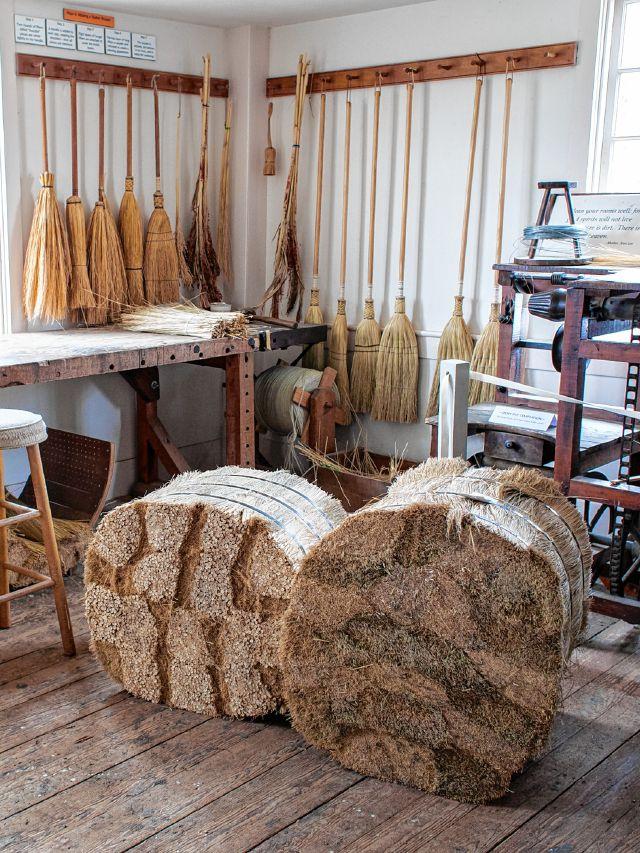

Thanks to the White Mountains, New Hampshire is famous as a place to take long walks going almost straight uphill. But increasingly it is also a great place to take long walks on the straight and narrow.
“A lot of people have trouble doing the 4,000footers, all those rocks and roots, but rail trails are for everybody,” said Marianne Borowski, vice president of the New Hampshire Rail Trails Conservancy. “That’s one of the things I most like about them: They are totally accessible. It doesn’t matter your age, your ability, what you think politically or anything else! Everybody can go onto rail trails.”

It has long been popular to turn unused rail lines into places for people to walk, bicycle, cross-country ski, horseback ride, go dog-sledding, or take their snowmobile or ATV. New Hampshire had a statewide rail trail plan as far back as 2005, and the non-profit New Hampshire Rail Trail Coalition was formed by rail fan Charles Martin in 2008 to help everybody coordinate their efforts. Then COVID came along, supercharging public interest.
“Interest in rail trails has been growing exponentially. The pandemic was a lot of it because people wanted to get out,” Borowski said.
Unused railroad lines are perfect for taking an outdoor stroll because they’re relatively flat –
One of the things you won’t find on most rail trails are rails. Usually the tracks get pulled up after the local train company abandons a corridor before the state makes it available for public use.
But not always. Concord contains one of the most unusual examples of what can be done if the rails are left in place: Scenic Railriders.
This business, which starts its fourth season on May 13, lets people pedal their way along the tracks in a four-wheel “rail bike” –think a train version of a paddleboat – between 2nd Street in Concord and
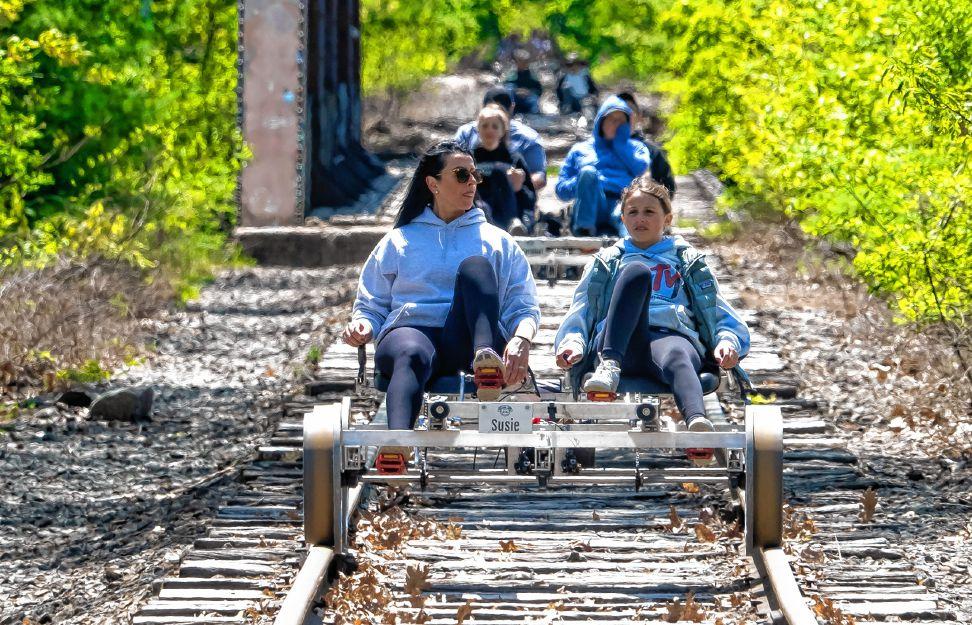
Commercial Street in Boscawen.
The trip has a 2.4-mile roundtrip southern leg and a 4-mile roundtrip northern leg (split by a quick dash across Sewalls Falls Road) and runs along scenic stretches of the Merrimack River. Two turnaround points give the chance to stretch your legs, and a visit to the Hannah Duston Memorial Statue is included.
The cost is $90 to rent a two-seater and $159 for a four-seater. To book online, go to scenicrailriders.com. trains can’t handle too steep a pitch –and often connect communities, reflecting a history of carrying passengers. Furthermore, since transportation planners in decades past didn’t worry too much about environmental effects, the rail corridors often go places that people want to see.
“They used to put lines where it
was the easiest way to go from point A to point B. Typically they were alongside wetlands, rivers and streams, because that was level,” said Borowski. “It doesn’t work like that anymore!”
New Hampshire is now crisscrossed by rail trails, a legacy of preautomotive transportation. The state
once had roughly 1,200 miles of operating railroads carrying people and goods in all directions, but fewer than 370 miles are still active. Most of the rest are owned by the state Department of Transportation, which took over each corridor when the private railroad stopped using it. As of 2022, according to the New Hamp-
shire Rail Trails Plan, the DOT owns 27 different rail trails covering 338 miles, ranging in length from the Northern Rail Trail that goes more than 50 miles between Lebanon and Concord to the 1 ½-mile Profile Rail Trail (as in Old Man of the Mountain profile) in Bethlehem. There are also many miles of rail trails owned by municipalities or private entities.
The overarching goal of rail-trail fans these days is connectivity – joining existing trails or connecting them to non-rail hiking paths so that people can walk as far as their legs will take them.
Turning an unused rail line into a viable rail trail takes time and money. There are some state and federal funds available to help but usually it’s a function of local fundraising and volunteer time. As a result, rail trails vary widely in condition.
Some still have the rails and ties in place, which makes them hard to walk on but good for winter travel once there’s enough snow on the ground. Others may have had the
tracks removed but little else done. “There can be ballast rock, sand, kind of a rough surface. There are places that are not that smooth – just like
our roads!” joked Borowski.
But many rail trails have been improved, with work done to improve drainage and maintain bridges and
Excellence is something we strive for each time we provide legal counsel for the families, businesses, and municipalities of the Granite State. We are proud to serve the people and communities of NH.
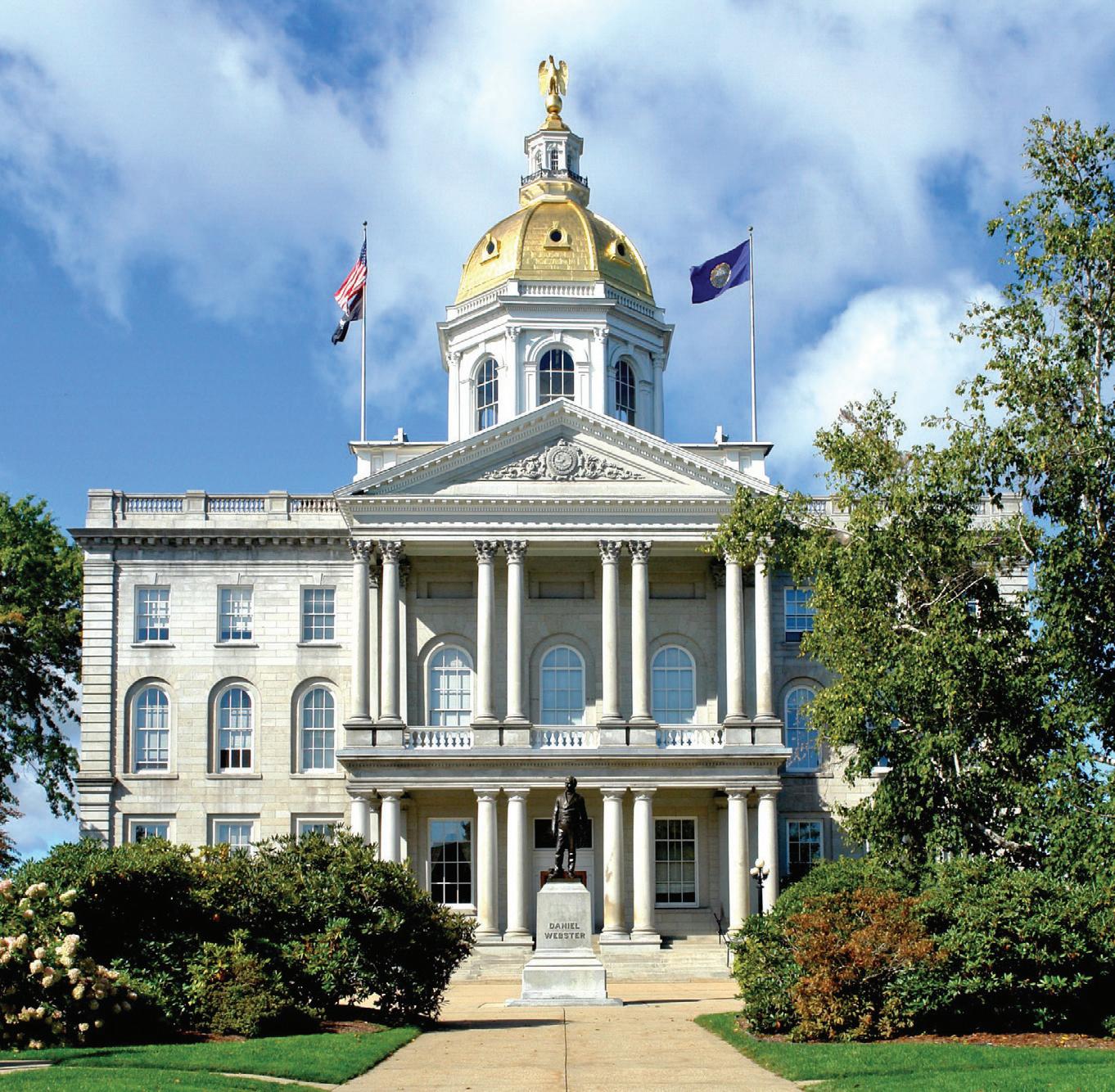
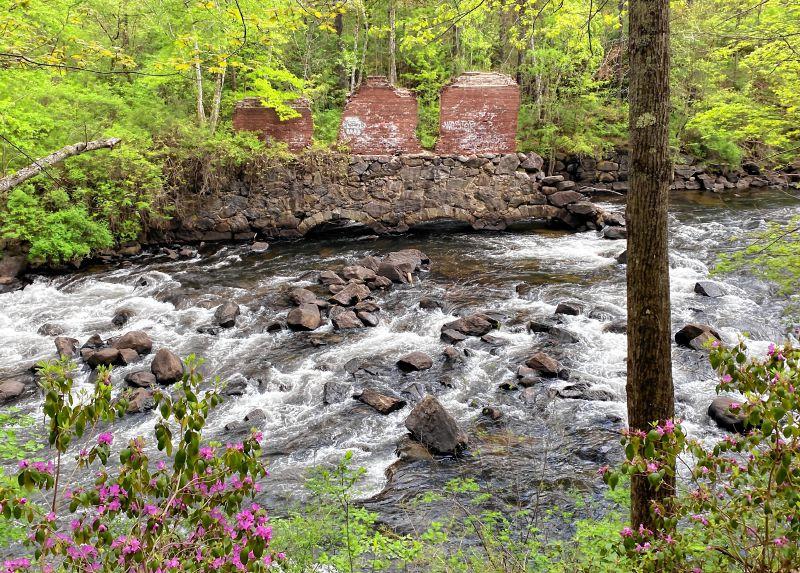
PRACTICE AREAS
•
•
•

law@uptonhatfield.com
uptonhatfield.com
the surface smoothed out. Some are even paved and can be ADA-compliant. There’s even one – the WOW (WinnipesaukeOpecheeWinnisquam)
Several

Concord. The Concord-Lake Sunapee Rail Trail being developed along the old Concord-Claremont Railroad line starts on Fisherville Road, the Merrimack River Greenway Trail is slowly taking shape along the river and will eventually connect to the Northern Rail Trail with the goal of creating a continuous path from the Connecticut River in the Upper Valley down to the Massachusetts border.
Further afield, at least a half-dozen rail trails can be reached within a half-hour drive of the city, from the charming little Head’s Pond Trail in Hooksett to the Henniker & Hopkinton Rail Trails to the long Winnipesaukee River Trail between Franklin and Laconia.
There is no single source to find all rail trails but several online sites can help. Here are places to start:
■ New Hampshire Rail Trail Coalition site, which includes a guide written by Charles Martin, who basically launched rail trails in New Hampshire, at nhrtc.org


■ New Hampshire and Vermont Cooperative Extension have an interactive list of various trails, including rail trails, at trailfinder.info

■ TrailLink from the national Rails-to-Trails Conservancy, has good information at traillink.com – you can use it to find rail trails all over the country.

Once you find and begin exploring the trails, why not make it into a quest? With over 40 completed New Hampshire rail trails, accept the challenge to find them all, and earn a custom embroidered patch from the New Hampshire Rail Trail Coalition to celebrate the achievement. The New Hampshire Rail Trails Challenge is free to the public, and is an activity designed to encourage exploration of all the beautiful trails, and to discover hidden treasures you might not otherwise encounter. For more information on completing the challenge, and for a glimpse at the achievement patch, visit online at: nhrtc.org/new-hampshire-rail-trailchallenge.

Don’t let the name fool you.
Yes, the New Hampshire Heritage Museum Trails include hiking, and offer walking paths through the natural beauty of the Granite State.

But there’s so much more, says Jeff Barraclough, who was named the New Hampshire Heritage Museum Trails president four years ago. The organization’s jurisdiction covers 21 sites, which are separated into three geographical groups in New Hampshire: Merrimack Country, Lakes Region and Seacoast.
Some destinations highlight hiking, others display artifacts that are tens of thousands of years old, and still others examine the Granite State’s contributions in several areas, including auto racing and flight, as

well as its role in the Second World War.
In short, don’t let the word ‘trails’ in the title fool you, Barraclough says, because hiking is just a piece of this lavishly packaged smorgasbord of learning, both inside the museums and outside on their property.
“The term trails is used loosely, not for a specific route to take that connects all of them,” Barraclough said. “These are all different, and you can choose to see several a day or use a week. Tourists can visit them all.”
Out-of-state visitors who are passionate and curious about local history in small towns will certainly need to familiarize themselves with this collaborative effort, created nine years ago.
Despite featuring a consortium of different museums and themes, all 21 are linked by the New Hampshire Heritage Museum Trails with one central aim in mind.

“Our goal is to make more people aware of these important cultural re-


sources and encourage residents and tourists alike to visit these museums and see all they offer,” Barraclough said. “We were looking for ways to work together and promote what we have and tell people to visit.”
The Heritage Museum Trails was
formed in 2014 to share resources and better promote programs, exhibits, and events. Aside from preserving the history and heritage of New Hampshire, individual museums on The Trail are “remarkably diverse,” from one another, Barraclough said.

Brookford farm store is open daily from 7 am - 7 pm.

Home delivery, year round CSA Subscriptions and bulk meat orders are available.


Organic Vegetables, krauts, aged meats, 100% grass fed beef and dairy, pastured chicken, eggs, pork and lamb and more!
Find out more about our farm and on site events on our website: www.brookfordfarm.com

“Some museums cater more to families, while others may be more suitable for adult visitors,” said Barraclough. “All of us, however, work very intentionally to create high-quality programming and experiences that we believe enhance people’s overall quality of life.”
Barraclough, who doubles as the executive director of the Millyard Museum in Manchester, is deeply invested in calling attention to the 21 locations, which include Canterbury Shaker Village and the New England Racing Museum in Loudon, the two attractions located closest to Concord.



Also featured on the 21-site journey is the Wright Museum in Wolfeboro, a compelling and detailed look at the Granite State’s role during World War II; the Belknap Mill in Laconia; and the Manchester Millyard.

Perhaps the most awe-inspiring visual is the massive, cigar-shaped submarine at the USS Albacore Museum in Portsmouth. The Albacore, the prototype for the Navy’s nuclear-powered research submarine force, was the first boat built specifically to operate underwater.
The sub was designed, built and maintained by engineers and craftsmen at the Portsmouth Naval Shipyard, serving as a platform from 1953 to 1972 for testing propulsion systems,
sonar equipment, dive brakes and other equipment.

The Albacore was moved to Philadelphia’s Inactive Ship Facility following its decommissioning in 1972, before Portsmouth City Councilman Bill Keefe led the charge to bring the Albacore to her birthplace as a permanent display.
The Albacore began its journey to the Portsmouth Naval Shipyard in May of 1985, maneuvering over a dismantled railroad bridge and a cutout section of a four-lane highway along the way.
Six months later, the Albacore found its new home on a concrete base in Portsmouth, one of 21 sites that form the New Hampshire Heritage Museum Trails.
The Albacore Museum is open seven days per week, beginning at 9:30 a.m. The last tickets of the day will be sold at 4 p.m.
The price to visit each site has an aggregate cost of $150, but a $25 ‘ passport’ allows customers to visit all trails and each of the 21 museum sites for up to one year.


Barraclough said the network of attractions drew about 200,000 visitors a few years ago, before the pandemic.
“We’re close to that number again,” Barraclough said. “It’s great to be back to normal.” ◆
New Hampshire Boat Museum
399 Center St. Wolfeboro, nhbm.org
■ Memorial Day through Columbus Day: Monday through Saturday, 10 a.m. to 4 p.m., and Sunday, noon to 4 p.m.
Remick Country Doctor Museum and Farm
58 Cleveland Hill Rd., Tamworth remickmuseum.org
■ Open daily 10 a.m. to 3 p.m.
The Libby Museum
755 N. Main St., Wolfeboro wolfeboronh.us/libby-museumnatural-history
■ Open June 1 through Labor Day, Tuesday through Saturday, 10 a.m. to 4 p.m. and Sunday noon to 4 p.m.
Museum of the White Mountains
34 Highland St., Plymouth plymouth.edu/mwm
■ Open Tuesday through Friday, 10 a.m. to 4 p.m.; Saturdays 11 a.m. to 4 p.m. Closed Mondays, Sundays, and university holidays.
Castle in the Clouds
455 Old Mountain Rd., Moultonborough castleintheclouds.org
■ Open May 27 to Oct. 22, Thursday through Monday 10 a.m. to 4 p.m.
Belknap Mill
25 Beacon Street East, Laconia belknapmill.org/museum
■ Monday through Friday, noon to 5 p.m.
Wright Museum of World War II 77 Center St., Wolfeboro wrightmuseum.org
■ Open daily May 1 through Oct. 31, Monday through Saturday 10 a.m. to 4 p.m. (last admission 3 p.m.); Sunday noon to 4 p.m. (last admission sales 3 p.m.)
Estate Planning
Medicaid Eligibility and Appeals
Asset Protection
Nursing Home Discharges
Probate Litigation
Guardianships
Trust and Probate Administration
Lake Winnipesaukee Museum 503 Endicott Street, Laconia lwhs.us/museum.htm
■ Open seasonally from mid-June through Columbus Day weekend. Wednesday through Saturday 10 a.m. to 4 p.m.
Aviation Museum of New Hampshire
27 Navigator Road, Londonderry nhahs.org
■ Open Fridays and Saturdays, 10 a.m. to 4 p.m., and Sundays, 1 p.m. to 4 p.m.
Canterbury Shaker Village 288 Shaker Road, Canterbury shakers.org
■ In May and June, indoor guided tours take place at 11 a.m, 1 p.m. and 3 p.m., Tuesday through Sunday.

Currier Museum
150 Ash St., Manchester currier.org
■ Hours are Wednesday, Friday, Saturday, Sunday 10 a.m. to 5 p.m. Thursday 10 a.m. to 8 p.m.
Lawrence L. Lee Scouting Museum and Max Silber Scouting Library 395 Blondin Road, Manchester scoutingmuseum.nhscouting.org
■ Wednesdays, 10 a.m. to 4 p.m. and Saturdays, 10 a.m. to 3 p.m.
Laboe & Tasker, PLLC is known for its experience and achievement in the area of Medicaid eligibility and difficult probate administration.
Preserving the economic integrity of the elderly client and providing guidance in a complex regulatory environment.
Manchester Millyard Museum
200 Bedford St., Manchester manchesterhistoric.org
■ Tuesdays through Saturdays, 10 a.m. to 4 p.m.
New England Racing Museum 922 Route 106 N., Loudon nemsmuseum.com
■ Saturdays 10 a.m. to 4 p.m.
New Hampshire Historical Society 30 Park St., Concord nhhistory.org
■ Thursday, Friday, and Saturday, 9:30 a.m. to 5 p.m.; Closed on federal holidays
SEACOAST
USS Albacore 569 Submarine Way, Portsmouth ussalbacore.org
■ Open daily 9:30 a.m. with last ticket at 5 p.m.
American Independence Museum
1 Governors Ln., Exeter independencemuseum.org
■ May through November, Wednesdays through Saturday, 10 a.m. to 4 p.m.

Moffatt-Ladd House and Garden 154 Market St., Portsmouth moffattladd.org
■ Open daily, 11 a.m. to 4 p.m. Portsmouth Historical Society 10 Middle St., Portsmouth portsmouthhistory.org


■ Open Memorial Day to Indigenous Peoples Day, daily 11 a.m. to 5 p.m.

Woodman Museum 182 Central Ave., Dover woodmanmuseum.org
■ April to November, Wednesdays through Sundays 10 a.m. to 5 p.m.
Strawbery Banke
14 Hancock St., Portsmouth strawberybanke.org
■ May, June, September, October open weekdays, 10 a.m. to 4 p.m. and weekends/holidays, 10 a.m. to 5 p.m.; July and August 10 a.m. to 5 p.m. daily
Tucked away in the quiet rural corner of Weare is Ilsley’s Ice Cream, a little scoop shop that has become a local favorite for families seeking a cold sweet treat on a hot summer day.

Lisa Ilsley’s ice cream store on Sugar Hill Road, situated right across from her family dairy farm, offers customers not only the chance to indulge in delicious homemade treats but also a chance to admire the natural beauty of the surrounding area.
At the store, customers can enjoy a cone, sundae or an ice cream sandwich, all while taking in the picturesque views of cows grazing in the pasture and breathing in the irresistible aroma of freshly baked waffle cones.
For Ilsley, the best part of running the ice cream shop is the people that she meets.

“You obviously make a lot of people happy,” she explains. “This is kind of their family activity to come here and have ice cream.”
With 10 classic flavors and unique options such as grasshopper mint and brown sugar oatmeal, there’s something for everyone.
Every day as she churns ice cream in her little store, Ilsley experiments with new flavors, drawing inspiration from customer suggestions and her own imagination.
A customer-inspired creation is Gold Rush, a blend of chocolate ice cream, cookie dough and caramel swirls.
Beyond just a business, Ilsley’s Ice Cream is a means of supporting the dairy farming industry that has been a part of Ilsley’s life since childhood. Growing up on her family’s dairy farm, she experienced first-hand the challenges and struggles faced by




farmers trying to make a living from their land.





To keep her family’s farm going and create her own income, Ilsley studied dairy management.
While she had originally planned to make cheese – a low-cost, lowequipment alternative that would allow her to start small and expand her business gradually – an ice cream business came up for sale nearby, which she couldn’t resist.


Ilsley bought the business and relocated it to the family farm, where she could use fresh, locally sourced dairy products to make homemade ice cream.



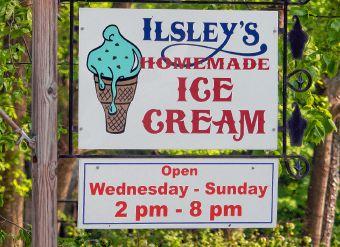

Although Ilsley doesn’t use milk from her family’s farm, she sees her ice cream shop as a way to support the broader dairy industry. The milk from her family’s farm is sold wholesale to a facility where it’s pasteurized and turned into ice cream mix, which she buys back to make her ice cream.
“I’m utilizing dairy products and promoting the dairy industry by selling and having everyone love ice cream,” Ilsley said. “That’s where my heart really is.”
While running the ice cream store with her family’s help, Ilsley also does barn chores and milks cows every day.

This is the ninth season for the store and Ilsley plans to add new ice cream sandwich flavors to the menu this season, which were a hit last year.

Ilsley sees herself contributing to the dairy industry and serving homemade ice cream for at least the next five years.
“We like our small little farm-based business,” said Ilsley. “Whether or not we expand, we always planned to leave it right here on the farm.”



The 2023 New Hampshire Ice Cream Trail, developed by Granite State Dairy Promotion and your local NH dairy farmers, features 42 ice cream shops all across the state. From north, south, east, and west, there isn’t a region left unseen.
Participants who complete the entire trail will receive a complimentary #eatlikeacow sweatshirt and be entered into a grand prize drawing for a chance to win a variety of NH made goodies. “The passport is a fun and unique incentive, and people enjoy the challenge,” said Amy Hall, Director of GSDP.
While the map features everyone’s favorite summertime treat, it’s also equipped with dairy facts, statistics, and information about dairy farming in New Hampshire.


“It’s my hope that trail goers will gain a better understanding of dairy farming, the rapid decline of farms in
our state, and the importance of real dairy in their diets. It’s an education piece that consumers need to read and understand,” said Hall.
The New Hampshire Ice Cream Trail is released annually on Memorial Day weekend and can be found at ev-
ery NH rest area and participating shop. So go ahead, create a day, weekend, or whole summer of fun touring New Hampshire. You may even encounter a dairy cow or two.
nhdairypromo.org/2023-ice-creamtrail
Whether you’re seeking a comfortable place to cool off, a natural lake to swim in, or a local pool for fun with friends and family, Concord and the surrounding areas are full of hidden gems and natural bodies of water.

As temperatures continue to rise over the summer, densely populated cities away from the seacoast, like Concord, are more prone to feel the effects of the summer heat without a breeze to break up the humidity and thickness in the area.
Keep safety in mind, however, as you head out because although Concord city swimming pools have lifeguards on duty, many of the recommended swimming areas in the county don’t. The Merrimack River has claimed lives over the last several years as
swimmers plunge into a current that isn’t visibly detected at the surface.
Parks and Recreation Director David Gill said, “It’s always that old story of when you go to a lake or a pond – have a buddy system so you’re not alone.”
When swimming in a river, a lake or any body of water that is either unfamiliar or an undercurrent could be present, try to swim with friends, he continued. If you’re not a strong swimmer, have a life jacket with you – it will save your life.
Though the city of Concord operates six outdoor pools and a splash pad, the number of lifeguards the recreation department can hire will determine the number of pools that will be opened, Gill said.




“If we are fully staffed, those pools are located in Rolfe Park, Garrison Park, Kimball Park, Rollins Park, Merrill Park and Keach Park while the splash pad is in White Park,” Gill said.
To open all of the pools and the splash pad, the city will need to staff between 35 and 40 lifeguards. At this time, they are still actively recruiting for the season but will have enough staff to open at least three pools, Gill said. They will be opened in the second half of June through the end of August.
The pools are free for use for Concord and Penacook residents with proof of identification, while non-residents can buy a season-long pool pass for $125 or a 48-hour pass for $20. Both passes can be purchased at the recreation office or the citywide community center.
A moving body of water, like the Merrimack River, is one of the most








dangerous places to swim, especially for children or weak swimmers.
Still, there are several small areas of calm water at off-the-beaten-path beaches throughout the 214-acre recreation area, which has trails along 5-miles of the Merrimack River, the most popular of which is a trail leading from the boat launch area toward the Merrimack shoreline where swimmers can find corners of calm waters to take a dip in.
However, there are no sanctioned swimming areas along the river and there are no lifeguards on duty monitoring the waterway.
“I think with the river, the biggest concern is that most people don’t know that it may look calm and smooth on top but actually, the current is just below the surface,” Gill said. “It could be going a lot faster than anybody anticipates – if you’re not a strong swimmer or have a limited swimming ability, it could catch you off guard and pull you out off your feet.”
Though easy to access, parks across the state require an entrance fee of around $3 per adult and $1 for children between the ages of six and 11 while admittance is free for children under the age of five and seniors over the age off 65. The fees may differ with each park.
Clough State Park, which is located about 20 minutes from Concord, sits on a public reservation area on the east side of Everett Lake about five miles east of the town of Weare. The lake is formed by a dam on the Piscataquog River and is open weekends beginning Memorial Day weekend and daily from late June through Labor Day.
About 30 minutes east of Clough State Park sits Bear Brook State Park in Allenstown, where residents can enjoy hiking over 10,000 acres of conservation land. Throughout the property, there are several lakes and ponds where residents can swim, specifically Catamount and Bear Hill ponds. Bear Hill Pond can be accessed to the
south of the property by Bear Hill Pond Road while Catamount Pond, which offers boating and kayaking, is accessed through the north entrance of the state park.
To the west of Concord by about 15 minutes is Elm Brook Park which is part of the Hopkinton-Everett Lakes Reservoir and maintained by the U.S. Army Corps. Once inside, which costs $5 per vehicle that enters, visitors can swim in Hopkinton Lake and will have access to picnic areas with grills and a playground, recreational boating and kayaking and sporting fields for soccer, basketball and baseball.
Tucked away behind the Opechee Peninsula in Laconia along the shores of Lake Winnepesaukee are two swimming areas – Opechee Cove and Opechee Point – 40 minutes north of the city. Because the water in the cove doesn’t move as often as other beaches, it can often test high in E. Coli bacteria while the point tests better than the cove. Look for signs before entering either water bodies.
There is no fee for parking at either beach.

Located closest to Concord are Griffin and Lagace beaches in Franklin, which both sit on Webster Lake. The beaches have a sandy shoreline and a green lawn space for picnicking, according to the city’s website. Parking permits are required by residents and all non-residents can purchase permits for $5 from the beach attendants at the entrance or through the Parks and Recreation Department.
To the north of Concord by about 45 minutes is Weirs Beach in the northern corner of Laconia on Lake Winnipesaukee in Endicott Lake Park. There are no lifeguards on duty and patrons must pay at the parking kiosks before using the beach.

And if you’re a saltwater fan, the ocean is only an hour to the east in towns like Portsmouth, Rye and Hampton or across the bridge to Maine in Ogunquit and York. ◆



Our Direct Support Professionals help the people we support to have a meaningful quality of life. Our Professionals work with people out in the community to gain life experiences, build positive relationships and increase their life satisfaction! We have many perks to offer including:
• Flexible Work Schedule




• Generous Paid Time Off



• Health Insurance





• 403b Retirement Plans
• Best perk of all, you make a difference everyday
 By MICHAELA TOWFIGHI
By MICHAELA TOWFIGHI
Weddings, birthdays, children’s births, family member’s deaths – the running group out of Runner’s Alley in Concord is there for it all.




When Brigitte Gray, the store manager, got married in 2021, members of the running group were there. A running friend, whose family is from England, now celebrates holidays with Gray or other group members. And when she went to buy her house, a running group connection helped her do so.


“They’ve integrated into my life where it’s hard to distinguish what’s work and what’s friends,” she said.






Each Thursday, a handful of runners gather outside the Runner’s Alley

storefront downtown. There’s a 3-mile or 5-mile loop on offer. And they come rain or shine, sun or snow.
Winter running means headlights, reflective clothes and even micro spikes for icy or snowy nights. In the summer, the sun’s still out when the group convenes at 6 p.m.

For longtime runners, it’s a way to log weekly miles and find others heading to local races. For others, it’s a way to try something new and stay active outside. But above all, the group is an easy outlet to meet new people.

“It can be really hard as adults to make new friends and try new hobbies, but this group is very welcoming,” said Gray. “I usually describe the group like a bunch of kindergartners in the sense that they like to get to know people and meet people. They’re not clingy.”
The weekly run leaves from the store on N. Main Street and tends to repeat a set of routes around downtown. The regulars know the trails by heart. For newcomers, they’re not far from the storefront, where all runs end as well.
“If folks are worried that they’ll get left behind, we repeat a lot of routes. That’s on purpose,” she said. “But we have enough that people don’t get sick of doing the same route all the time.”
The Runner’s Alley group is one of many that meet in the Concord area. To explore the city’s 31 trails, the Concord Trail Running Group meets Wednesday nights. Their upcoming runs can be found on their Facebook group.
And for those interested in races or track workouts, the Granite State Running Team offers weekly sessions at Memorial Field in Concord on Tuesdays at 5:30. Interested participants can come to the field and try a few workouts with the team, before deciding if they want to become a member or not. Membership fees are $45 annually, and provide access to coaching and discounts at local running stores.
These organized group runs allow
Concord residents of all ages and abilities to come together, work out, all while meeting new people, said Gray.
“Running is a really comfortable setting for people to talk because they don’t have to look each other in the
eye and you’re outside, so it just gets all the positive endorphins flowing. It’s good for your body. It’s good for your mental health. It’s good to socialize,” she said. “I think running really does represent this community. ◆
Professional actors will arrive again this summer to deliver on iconic stages. Catch a show.
Here are places in New Hampshire that offer theatrical productions performed by professional actors primarily in the summer and what they have planned for the 2023 season.

Barnstormers Theatre
104 Main Street, Tamworth barnstormerstheatre.org
■ Nunsense (June 29 – July 8), Arsenic and Old Lace (July 13 – 22), The Stranger (July 27 – Aug. 5), Fully Committed (Aug. 10 – 19), Ken Ludwig’s Baskerville: A Sherlock Holmes Mystery (Aug. 24 – Sept. 3)
Interlakes
Summer Theatre
1 Laker Lane, Meredith interlakestheatre.com
■ Fiddler on the Roof (July 5-16), Kinky Boots (July 19-30), South Pacific (Aug. 2- 13), Footloose (Aug. 16-20).
Jean’s Playhouse
10 Papermill Drive, Lincoln jeansplayhouse.com
■ Into the Woods (July 13-29), Legally Blonde (Aug. 3 – 19), On Golden Pond (Aug. 24 – Sept. 2), plus shows with the Impact Children’s Theatre on classic fairy tale stories.
New London Barn Playhouse

84 Main Street, New London nlbarn.org
■ The 25th Annual Putnam County Spelling Bee (June 14 – 25), Guys and Dolls (June 28 – July 9), Fully Committed (July 12 – 16), Beautiful: The Carole King Musical (July 19 – Aug. 6), The Wedding Singer (Aug. 9 – 20) and Lady Day at Emerson’s Bar & Grill (Aug. 23 – Sept. 3).
Peterborough Players
55 Hadley Road, Peterborough peterboroughplayers.org
Souvenir (June 22 – July 2), Maytag Virgin (July 6-16), Grand Horizons (July 20 – 30), Pipeline (Aug. 3 – 13) and Tell Me On A Sunday (Aug. 17 – 27).
Seacoast Repertory Theatre
125 Bow Street, Portsmouth seacoastrep.org
■ Newsies (May 26 – July 8), Hair (July 14 – Aug. 27) and Bat Boy (Sept. 8 – Oct. 29)
Weathervane Theatre
389 Lancaster Road, Whitefield weathervanenh.org
■ Weathervane’s schedule is an alternating repertory schedule; see a different show almost every night. North Country Shakes, Stones in His Pockets, Honky Tonk
Laundry, Meteor Shower, Dirty Rotten
Scoundrels, The Old Man and the Moon, A Midsummer Night’s Dream, Mamma Mia!, Guys and Dolls, and Primary.
50 Reservoir Road, Meredith winnipesaukeeplayhouse.org
■ Mamma Mia! (June 15 – July 8), Shout! The Mod Musical (July 12 – 22), Murder on the Orient Express (July 27 – Aug. 12), Driving Miss Daisy (Aug. 16 – 26), Sweeney Todd (Aug. 31 – Sept. 9) and The Glass Menagerie (Sept. 14 – 24)



Nestled along 210 acres across from New Hampshire’s second largest lake, the Squam Lakes Natural Science Center in Holderness is a sprawling collection of fields, forests and wetlands teeming with wildlife from the natural world. The animals on display at the center include minks, painted turtles, coyotes, foxes, fishers, bobcats, mountain lions, deer, river otters, black bears, owls and hawks, along with various fish and amphibians.
The center offers field trips, summer guided discovery tours, nature tours, homeschool programs, group tours and birthday tours. The trail hours from May 1 to Nov. 1 are 9:30 a.m. to 5 p.m. with the last trail admission at 3:30 p.m. In addition, from May through October, the cruises on Squam Lake include a Discover Squam cruise, a cruise with a naturalist; a loon cruise and private charters. Visit nhnature.org.

ABOVE: The two new mountain lion cubs are still a bit shy in their new environment at the Squam Lakes Natural Science Center in Holderness.
LEFT: The center also has two bobcats. In the wild, bobcats are sometimes misidentified as mountain lions, which have not been found in the state, according the state Fish and Game. While large bobcats often weigh more than 30 pounds, they’re significantly smaller than a mountain lion and they can be distinguished by their stubby tail.

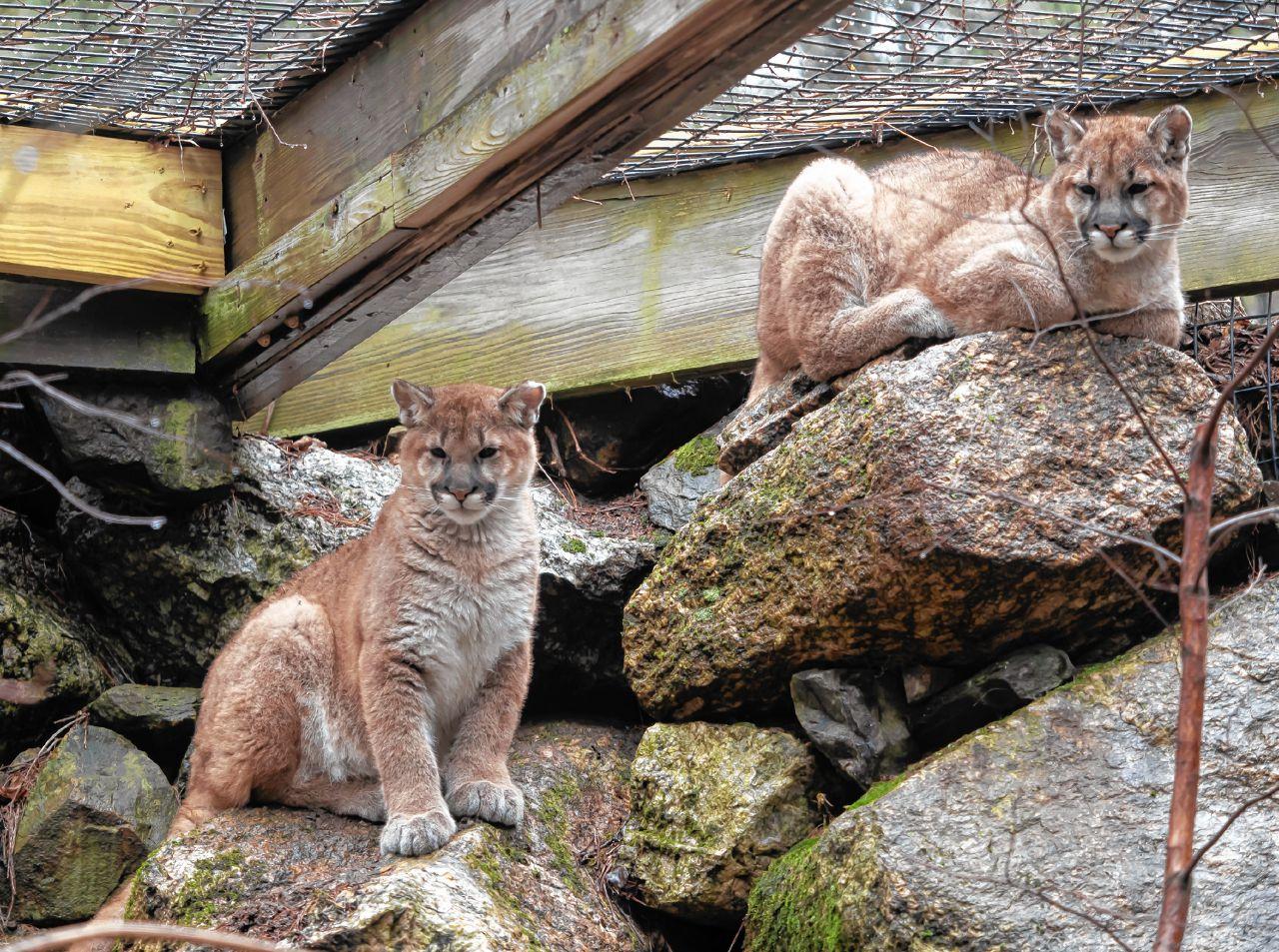





















To














An agency that creates opportunities for all people to thrive and a partner in building strong, resilient communities which promote a more equitable society.







While it took to tennis and golf in warm weather recreation, Concord, not unlike the rest of the country, loved its baseball too; for watching as well as participating.
The Sunset League got going in 1909 with four teams – the Haymakers, Old Timers, Sluggers and the White Parks
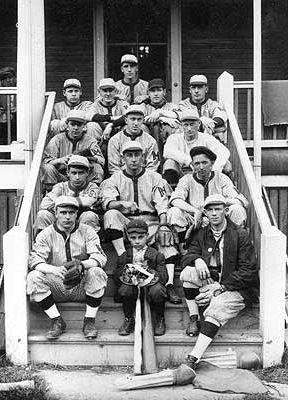
playing at White Park.
Crowds picked up as the inaugural season progressed, according to reports in the Monitor. Early on, one sentence write-ups were all that appeared.
By the end of the month, game reports covered several paragraphs. “These contests are gaining in popularity and it is estimated that there were over 500 in attendance last night,” said the final line in one such report. By the end of the season, the Sunset League was hopping.
“Tonight’s contest will bring the largest crowd ever to White
RIGHT: One of the first Sunset League teams, shown in 1909. That first season brought large crowds to White Park.
Concord Public Library
‘Crosscurrents of Change” Concord, N.H. in the 20th Century’

This 400-plus page hardcover edition introduces you to the people who helped shape a city, and it takes you through tragedy and triumph with some of the defining moments in Concord history. To purchase a copy or to learn more, visit concordhistoricalsociety.org/store.

Park, for about every man, woman and child in Concord, unless physically incapacitated, has made arrangements to attend,” the Monitor wrote, building up the final game.

The night delivered. “ALL OVER NOW” yelled a banner headline about the Haymakers’ victory. “Sunset Season Ends in Blaze of Glory,” was the line under that.
“At the close of the contest, the fans, cheering lustily, joined the players in a triumphant march around the diamond, a color bearer with the pennant at the head, and after every Haymaker had been hoisted on the shoulders of the enthusiasts, that all might see and remember the men that had made the night memorable, Mr. Ahern with well chosen words presented the handsome banner.”
This excerpt written by Allen Lessels is part of Chapter Seven: On the Ball in Crosscurrents of

I do nothing but sit with arms hanging limp, shoulders slumped, eyes teary, mouth dry, unable to concentrate on anything but the worst moments, this loose posture,
unnatural stillness opens me to the reality of my sorrow unconnected to life stuck on pause in need of a nudge an adrenalin spike
draw in the after glow of sunset, feel the explosion of color let it fill my hollow space to feel alive again.
Marjorie BurkeMarjorie Burke, a retired pharmacist, lives in Weare. She is co-editor of Women’s Uncommon Prayers: our lives revealed, nurtured, celebrated. In addition, she has published the Melting Ice ~ Shifting Ice trilogy, the journey with her husband’s Alzheimer’s disease. Her newest book When Will Someday Come is a collection of poems about caregiving, grieving and living.
Share with us >> Do you have poetry or images? Send them to editor@aroundconcord.com.
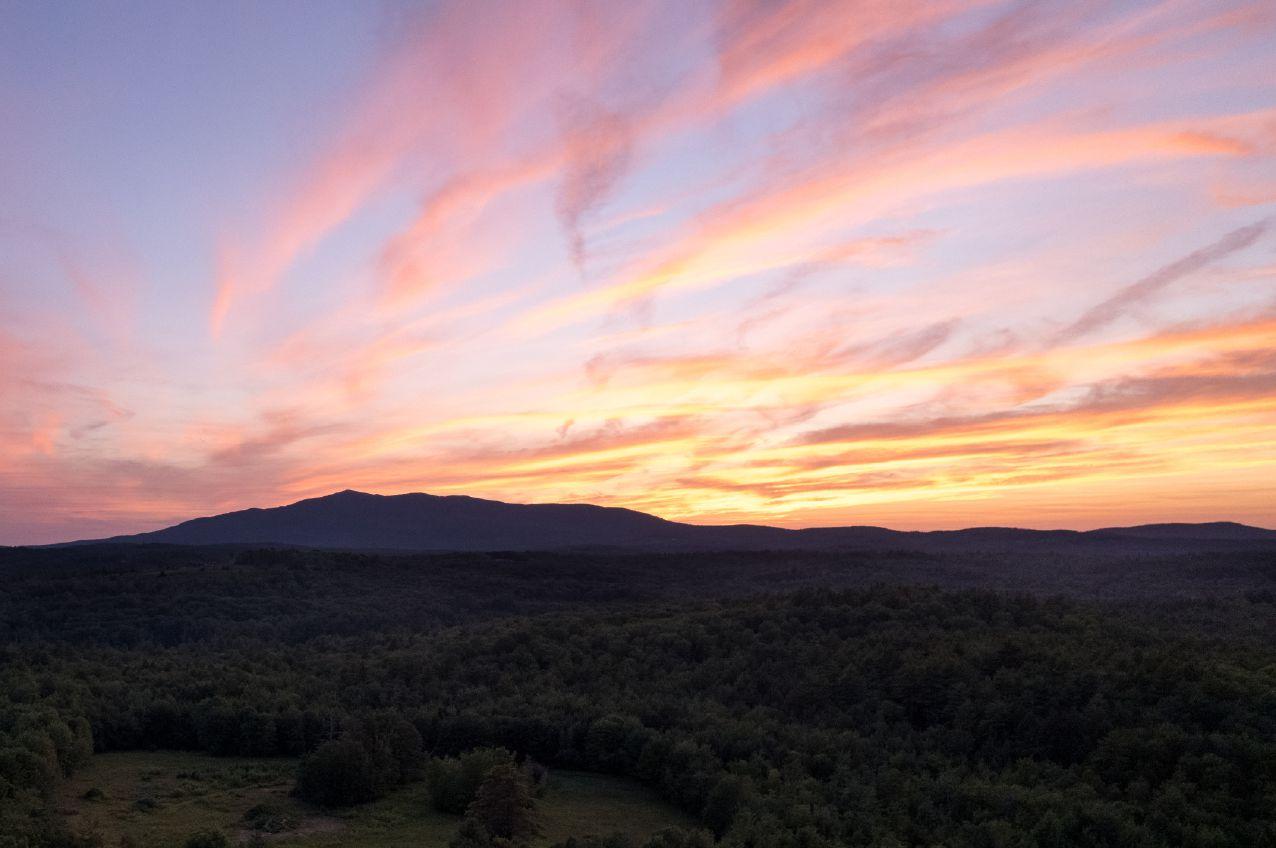
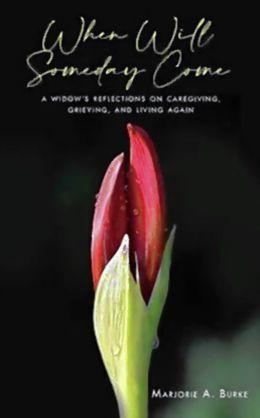








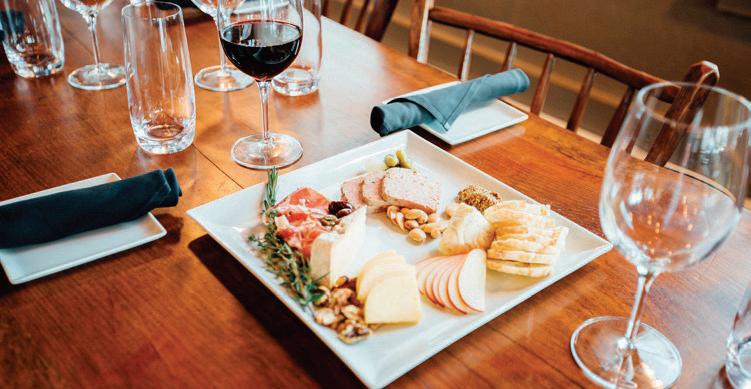











ABOVE: Ian Nugent of the Winnipasaukee Warriors celebrates during the opening ceremonies of the Special Olympics at Memorial Field in Concord on May 7.

TOP LEFT: George Georgopoulos with his sons, Spiro, center, and Nasi at Beanie’s Bar & Grill, which opened recently in Loudon.


LEFT: Peggo Hortsmann Hodes conducts the women at South Congregational Church in downtown Concord during her final concert as director of the Songweavers Women’s Chorus on April 22.

DavidPlizga ofPortland, Maine,rides thewave inthemanmade competitionhole onthe WinnipesaukeeRiver atMill City Park at Franklin Falls in downtown Franklin last July. “This has a wave that creates a perfect kind of concave deal to practice the littlerodeo moves, spinning and stuff, cartwheels,different things,” he said. Billed asNew England’s first whitewater park, Mill City Park also includes play areas for kids, an outdoor theater space, camping, trails and more. The park will host Winni River Days in June. Check millcitypark.com for details.

>> Welcome to ‘A Thousand Words,’ a quarterly feature that ends the magazine with an iconic photo. Share your image with us, and we may be able to use it in a coming issue. Only high-resolution photos are accepted, and despite the intent of the feature, we will need to accompany your image with a few words. So please send your photo and a brief description to editor@aroundconcord.com.





With high-performing, low-maintenance decking that is both eco-friendly and weather-durable, Trex has earned its reputation as the #1 brand in outdoor living. Get started on the deck of your dreams today by visiting any of our nine locations.



Complement your decking Frame every special moment with the right details – choose from a variety of decking colors and railing styles to perfect your dream deck.


Sustain, without the need to maintain Trex decking is made from up to 95% recycled materials and will never need the added wear and tear care that wood does. Our boards don’t rot or splinter, nor do they need to be stained, sanded or sealed. It’s a good feeling to be able to take in the view from your deck and know you did your part to protect the world around you.
